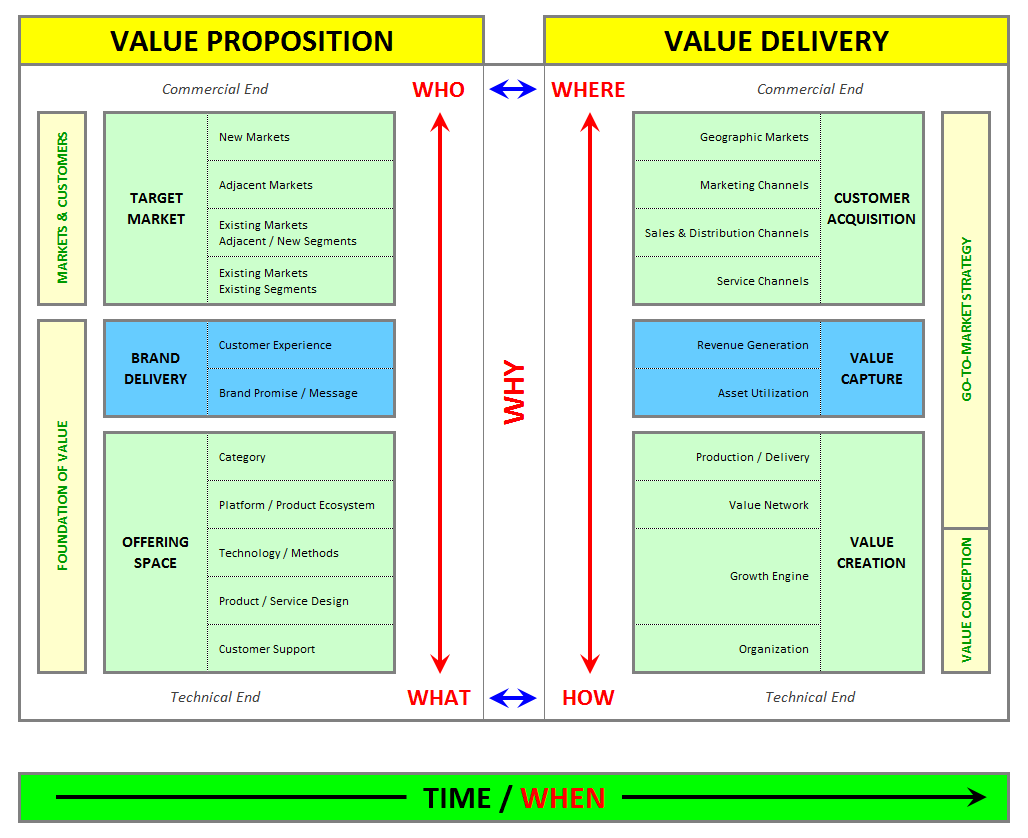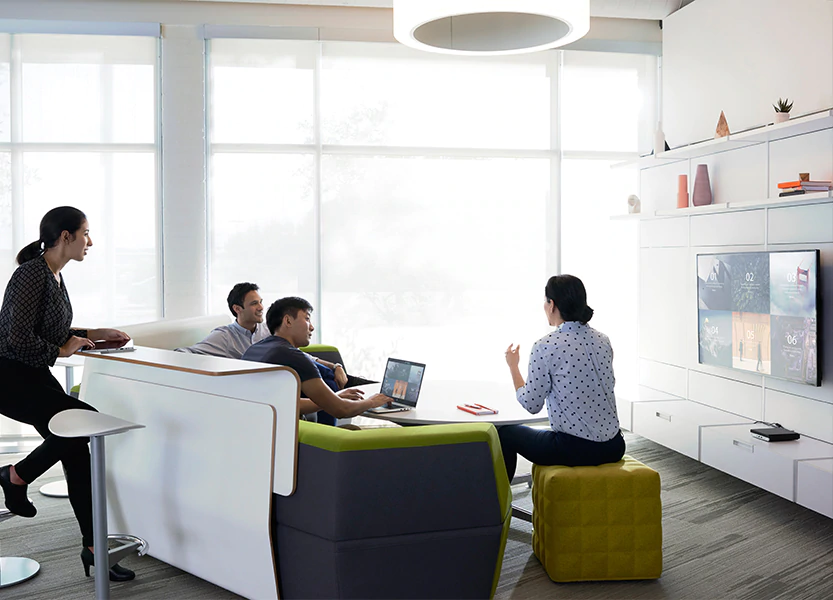The Future Lens Business Model Innovation Framework (Future Lens) is Legacy Innovation Group's proprietary framework for developing innovative new business models.
We developed this framework specifically to enable the design of innovative new business models that address emerging market needs (emerging futures), and thereby connect businesses and markets in completely new ways. Future Lens is singularly focused on this one aim. As such, it offers a rapid approach to Business Model Innovation (BMI).
Pursuing innovative new business models has two steps. First, it requires that one completely rethink what problem it is they are solving for within a particular market, and as a result of that, what business they really need to be in. This often leads to a broadening of one's business scope. Secondly, it requires that one undertake a process wherein they closely examine the many different parts of their business, with the aim of uncovering those areas that can be changed to yield a completely new (and hopefully more innovative) business model. At stake in this process are the what, where, how, and to whom offerings will be created, delivered, and monetized. The goal, ultimately, is to design a new business model that will yield a meaningful step change, especially in terms of market engagement and growth.
We refer to the various "parts" of the business as its "domains of potential", or simply "domains". When searching for an innovative new business model, each of these domains must be examined in thorough detail. Future Lens provides the framework for doing precisely that.
Future Lens is a highly-structured framework. It begins by dividing the business model into two halves, namely Value Proposition and Value Delivery. Each of these, respectively, addresses two key dimensions of the business model — Value Proposition that of "who" and "what" / Value Delivery that of "where" and "how". Each of these two sides of the model is then made up of three (3) specific domains, for a total of six (6) domains in all. These six domains are then further divided into a total of twenty two (22) distinct "points of differentiation". In any given scenario, each such point of differentiation can be used as a source of change in the business model.
By framing out the two key dimensions of Value Proposition ("who" and "what") and of Value Delivery ("where" and "how"), we are thus able to illustrate how all six domains fit together to create a broad canvas for business model innovation. This enables us to lead clients through a structured examination of their business in search of finding key new opportunities to innovate the business.
It is very important in this process to understand that the most impactful innovations will arise from using combinations of differentiators in several of these domains. This very often allows a business to deliver truly differentiated value to a market. We call such designs "Future Lens Designs".
As a tool of examination therefore, Future Lens allows us to evaluate all of the possible designs that might be considered to deliver a particular value or experience. Points–of–differentiation can be considered in any arrangement or combination (designs) until the one best design is found that delivers the type of value required to resonate with a specific market need.
Future Lens is structured into two primary halves – Value Proposition and Value Delivery. To create further definition, each of these captures a particular spectrum with anchor points at either end. Value Proposition captures the spectrum of WHO and WHAT, while Value Delivery captures the spectrum of WHERE and HOW. Centered right in between these is the question of WHY, which – in keeping with good Human Centered Design practice – places the matter of customer needs and motivations front and center. This makes for a fifth anchor point, and a very distinguishing attribute of this model (the only such model that inherently incorporates a Design Thinking foundation). These five anchor points reflect the five fundamental questions that any new business model must answer.
Furthermore, each side of the model – Value Proposition and Value Delivery – has what can be thought of as a Commercial End and a Technical End. The WHO and WHERE represent the "Commercial End" of the business model, in that they deal with monetizing value in the marketplace, while the WHAT and HOW represent the "Technical End" of the business model, in that they deal with creating value from within the organization.
Within this conceptualization of the business model, we overlay twenty two distinct points–of–differentiation. These points identify those places where your business has the potential to differentiate the value it brings to market, either by executing them differently than how is done by others or from how has been done in the past (by anyone). It is these twenty two points–of–differentiation that provide the clues to unlocking new value opportunities, particularly when multiple points are designed into an entirely new business model that either breaks through existing market barriers or entirely disrupts the currently prevailing model of a particular market. In either case, point–of–differentiation meta–sets are the makings of tremendously impactful innovation, particularly when used to unlock nascent trends, inflections, and discontinuities.
One will also notice that the very last point–of–differentiation introduces the question of WHEN. This becomes a sixth anchor point the business model must answer, and is a question that is sometimes best left to be pondered closer to the end of the exercise. It is a question that has to be considered in light of timing around particular trends in the marketplace, and in the world at large, as being either too early or too late with a particular model can both have negative consequences. Trend timing is very important therefore.

The 22 points–of–differentiation are explored in greater detail below.
The Future Lens Business Model Innovation Framework serves as a key tool within a number of our innovation workshops and events. To learn more, see our Workshops & Fieldwork Events page, or to learn about engaging us in this capacity, refer to our Workshops Engagement page.
The Future Lens Business Model Innovation Framework and the Flight Board Innovation Method (together) provide the basis for our Business Model Innovation training course. To learn more, see our Business Model Innovation Course page, or to learn about engaging us in this capacity, refer to our Training Engagement page.

CEOs come and CEOs go. Some are excellent. They generally ‘get it’. Others not so much. They really ‘don't get it’. What makes the difference between these?
READ MORE
There's an insidious debate that's bounced around for probably the better part of twenty years now. It's the debate of whether or not ‘innovation is everyone's job’...
READ MORE
Innovation Spaces – which can refer to any space intentionally designed to foster and facilitate good innovation work – come in all sorts, shapes, and sizes...
READ MOREWe partner with committed business leaders to make their organizations the driving forces in their markets.
CONTACT USSign up for our newsletter.
NEWSLETTER SIGN-UP